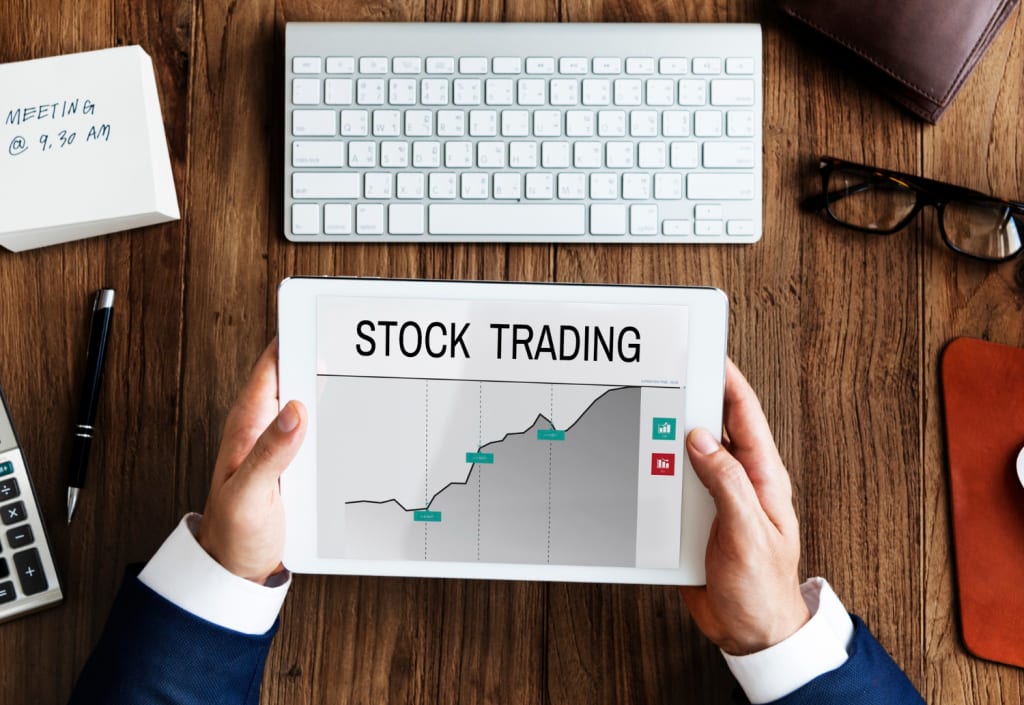CFD stocks: How to trade and how it works?
CFD (Contract for Difference) stocks trading is a form of derivative trading that allows traders to speculate on the price movements of individual stocks without owning the underlying shares.

If you're looking to trade stocks without the hassle of owning them, then trading CFD stocks could be the perfect fit for you. The process is simple: Instead of buying the actual stock, you make predictions about whether a company's value will rise or fall. Fortunately, getting started with CFD stocks trading has become incredibly convenient nowadays, as many online brokers offer these types of investments as part of their services.
What is a CFD?
A CFD is a contract for difference, which means it is a derivative product. It allows you to trade the underlying asset's value without actually owning it.
For example, if you buy Apple stock and then sell it for more than what you paid for it, that gain is called a "dividend yield." Unlike traditional shares, where company dividends are paid in cash, CFD holders receive dividends through investment profits.
CFDs are traded over-the-counter (OTC) rather than through an exchange such as the New York Stock Exchange or the Nasdaq Stock Market LLC (Nasdaq). This means there are no listing requirements. Therefore, any company can issue its own CFDs without being listed on any particular exchange!
Understand CFD Stocks and Ways to Trade it
CFD stocks represent a derivative form that enables you to speculate the price for stocks without the need to physically own them. These instruments are traded on margin, allowing you to execute larger trades with a smaller capital requirement than traditional share purchases.
Venturing into the world of CFDs expands your horizons beyond individual stock investments. It opens doors to explore popular trading indices like the S&P 500 or Nasdaq Composite.
Additionally, you can dive into the world of exchange-traded funds (ETFs), granting you effortless access to specific industries, like gold mining or the ever-evolving domain of oil production or Crypto CFDs that allow traders to speculate on the price movements of various cryptocurrencies, such as Bitcoin, Ethereum, or Litecoin, without owning the actual digital assets.
How to Trade CFDs Stocks?
Step 1: Educate Yourself about CFDs
• Understand the concept of Contracts for Difference (CFDs) and how they differ from traditional forms of trading.
• Learn about the underlying assets available for CFD trading, such as stocks, indices, commodities, and currencies.
Step 2: Choose a Reliable CFD Broker
• Research and choose a reputable CFD broker that aligns with your trading goals and offers a user-friendly platform.
• Consider factors like regulatory compliance, competitive spreads, leverage options, and available trading tools.
Step 3: Open a CFD Trading Account
• Follow the account opening process provided by your chosen broker, which typically involves providing personal information and completing verification procedures.
• Choose the appropriate account type (e.g., individual, joint, corporate) and deposit funds into your trading account.
Step 4: Develop a Trading Strategy
• Create a robust trading strategy that includes entry and exit points, risk management techniques, and position sizing guidelines.
• Utilize technical and fundamental analysis to identify potential trading opportunities.
Step 5: Execute Trades and Monitor Positions
• Use the trading platform provided by your broker to access a wide range of CFD instruments.
• Execute trades based on your trading strategy, considering factors such as market trends, news events, and technical indicators.
• Monitor your positions closely, employing stop-loss and take-profit orders to manage risk and protect profits.
Keep in mind that CFD trading involves inherent risks, and it is crucial to conduct thorough research, practice risk management, control your emotions and continuously educate yourself to improve your trading skills and enhance your chances of success.
Conclulsion
As CFDs are traded on a CFD platform, the first step is to find your preferred broker and open an account. But it's important to note that CFD trading involves risks, including the potential for significant losses. Traders should thoroughly understand the risks involved, conduct proper analysis, and utilize risk management strategies





Comments
There are no comments for this story
Be the first to respond and start the conversation.